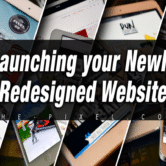
Detail the process of designing signs for transportation hubs.
INTRODUCTION
Transportation hubs—such as airports, train stations, bus terminals, and subways—are dynamic environments that serve millions of travelers daily. Clear, consistent, and well-placed signage is critical in helping people navigate complex spaces quickly and safely. Designing signs for such high-traffic areas involves a structured process that blends user-centric design, accessibility, regulatory compliance, and architectural integration. This article details the step-by-step process of designing signs for transportation hubs.
1. CONDUCT SITE ANALYSIS AND USER RESEARCH
The first step involves a thorough analysis of the hub’s layout, traffic flow, architectural features, and user demographics. Designers must understand peak traffic times, entry and exit points, decision-making moments, and bottlenecks. Observing how passengers move and identifying common confusion points is vital for effective sign placement.
2. DEFINE SIGNAGE OBJECTIVES AND HIERARCHY
Not all signs serve the same purpose. Signs must be categorized into functional types—directional, informational, regulatory, warning, and identity signage. Establishing a hierarchy ensures that critical information (e.g., security checks, gate numbers, exits) receives visual priority over secondary details like advertising or amenities.
3. DEVELOP A WAYFINDING STRATEGY
Wayfinding is the foundation of transportation signage design. A comprehensive strategy includes:
- Zoning the facility (e.g., arrivals, departures, baggage claim)
- Color-coding or icon-based guidance for quick visual recognition
- Establishing a consistent navigational flow that supports passenger movement
This strategy guides all subsequent design and placement decisions.
4. DESIGN WITH UNIVERSAL ACCESSIBILITY IN MIND
Transportation hubs serve diverse populations, including non-native speakers, elderly travelers, and people with disabilities. Signs must:
- Use simple language and pictograms
- Provide multi-language translations
- Meet ADA and accessibility standards, including height, tactile lettering, braille, and high-contrast visuals
5. SELECT MATERIALS AND FABRICATION METHODS
Durability and visibility are key. Materials must withstand heavy wear, weather exposure (for outdoor areas), and frequent cleaning. Common choices include aluminum, tempered glass, high-impact acrylics, and anti-glare finishes. Long-lasting, low-maintenance materials reduce operational costs and ensure long-term readability.
6. CHOOSE TYPOGRAPHY AND ICONOGRAPHY
Typography must be legible from appropriate distances. Sans-serif fonts with wide kerning (letter spacing) are preferred. Standardized icons—like arrows, elevators, restrooms, and transit logos—enhance comprehension across languages. Size and placement must consider both pedestrian and vehicular viewing angles.
7. TEST PROTOTYPES IN REAL ENVIRONMENTS
Before full-scale production, prototypes should be tested in real settings to assess visibility, comprehension, and flow. This phase includes:
- Simulated walks by diverse user groups
- Observational feedback
- Adjustments for height, font size, illumination, and language
8. COORDINATE WITH ARCHITECTS AND REGULATORY BODIES
Sign placement must comply with local building codes, transportation regulations, and architectural standards. Designers work closely with planners, contractors, and transport authorities to ensure proper installation, lighting integration, and structural support.
9. PLAN FOR ILLUMINATION AND VISIBILITY
Lighting is crucial in transportation hubs that operate 24/7. Use:
- Backlit signs or internal LED illumination for readability at night
- Reflective materials in outdoor areas
- Emergency signage with backup power to remain visible during outages
10. IMPLEMENT MAINTENANCE AND UPDATING SYSTEMS
Designs should allow for easy updates—such as interchangeable panels or digital screens—for route changes, renovation notices, or seasonal messages. Regular maintenance protocols should be established to clean, repair, or replace worn signage promptly.
CONCLUSION
Designing signs for transportation hubs is a complex, multi-disciplinary process that demands clarity, durability, inclusivity, and seamless integration with the built environment. Effective signage doesn’t just guide travelers—it enhances the overall experience, boosts efficiency, and supports safety in some of the busiest public spaces in the world.
HASHTAGS
#TransportationSignage #WayfindingDesign #PublicSignage #SignageSystems #TransitDesign #UserExperience #NavigationSolutions #SmartSignage #AccessibilityDesign #UniversalDesign #SignageStrategy #DesignForPublicSpaces #AirportSignage #TrainStationDesign #TransitWayfinding #VisualCommunication #PassengerExperience #SignageEngineering #SignageDesignProcess #UrbanMobility #PublicTransportDesign #InclusiveDesign #SignageClarity #TransportationHubs #SignageInnovation





